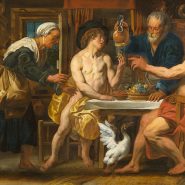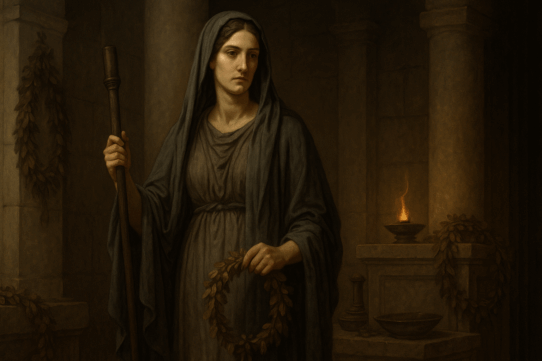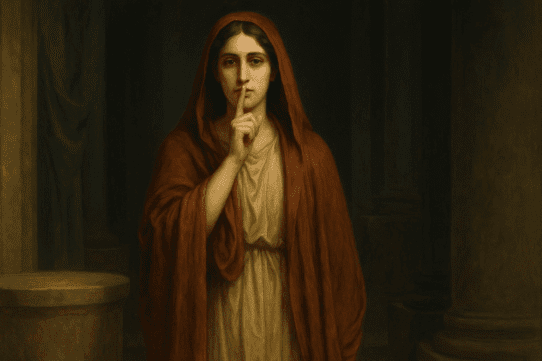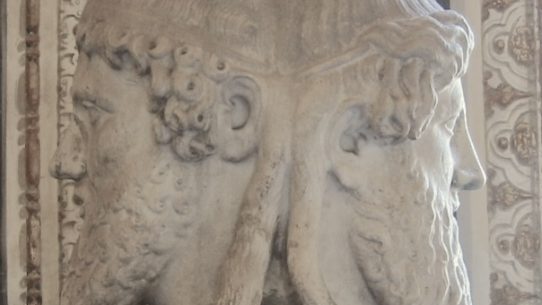QUICK SUMMARY
Favonius is the Roman god of the West Wind, known for bringing spring’s first warm breezes. His gentle winds awakened plants, signaled the end of winter, and played a vital role in agriculture and seasonal renewal. Often paired with Flora, he symbolized rebirth, balance, and the soft power of nature.
Favonius was the gentle West Wind of Roman mythology, a warm breeze that marked the turning of seasons and the rebirth of the natural world.
Known for bringing spring’s first soft air, he stood in contrast to the harsher winds that shaped Rome’s environment and cosmology. While often treated as a minor deity, his presence influenced agriculture, poetry, festivals, and Roman views of weather as a divine force.
The Role Of Favonius In Roman Nature And Cosmos
Romans categorized winds as powerful divine personalities, each one associated with a direction, temperament, and effect on human life. Favonius represented the shift from winter to spring. His breeze awakened sleeping seeds, coaxed flowers into bloom, and signaled the safe return of sailing and farming activities after the cold season.
In the Roman worldview, the West was both mysterious and fertile. Favonius’s arrival meant change, renewal, and hope. He was neither overwhelming nor destructive. Instead, he was steady enough to warm the land yet soft enough not to harm it. This made him a symbol of balance and a reminder that nature’s gentleness could be as powerful as its storms.
Origins And Greek Connections
Like many Roman deities, Favonius had a Greek counterpart. He was the Roman form of Zephyrus, the gentlest of the four Anemoi. Although the Romans drew heavily from Greek mythology, they adapted the personality of Favonius to suit their culture. Where Zephyrus often appeared in myths of love and tragedy, Favonius was more closely connected to agriculture and the practical rhythms of the Roman countryside.
His name may derive from the Latin favere, meaning “to favor” or “to bless,” reflecting his beneficial nature. Through him, the land received what it needed at precisely the right moment. To the Romans, that was divine favor in its clearest form.
Favonius And The Seasons
The heart of Favonius’s mythology lies in his association with spring. His most important moment came with the festival of the Floralia, devoted to Flora, the goddess of flowers. Favonius and Flora were often paired, since his warm wind stirred vegetation and brought her realm back to life.
Farmers watched for the earliest hints of his breeze, believing it signaled the start of planting season. Poets wrote about his touch on trees, valleys, and distant hills. Even ordinary citizens felt his presence, recognizing in the soft wind a promise that winter’s hardships were ending.
Flora And Favonius: A Romance Of Renewal
The Romans frequently described Favonius as the companion or consort of Flora. Their union represented the harmony between wind and plant life. Favonius awakened seeds and stirred the soil, while Flora welcomed blossoms and greenery.
This pairing emphasized the cooperative nature of divine forces. Nothing in Roman mythology existed in isolation. Even minor deities acted within a larger network of relationships that mirrored the interdependence of the natural world.
Depictions And Symbolism
Favonius appeared in Roman art as a winged youth carrying flowers or blowing wind from a billowing cloak. These symbols reflected the aspects of nature he governed:
- Wings: his identity as a wind deity
- Flowers: the arrival of spring
- Light garments: warmth, movement, and gentleness
He was sometimes shown with children, representing breezes that spread seeds across the countryside. Unlike gods of storms or tempests, Favonius was rarely feared. Instead, he embodied renewal, balance, and the soothing side of nature.
Relationship To Other Roman Winds
Roman cosmology divided winds into directional powers. Favonius was one of four principal winds, each with its own traits:
- Favonius: warm west wind, gentle and life-giving
- Auster: the south wind, often humid or stormy
- Aquilo: the north wind, cold and harsh
- Eurus: the east wind, varied and unpredictable
Favonius balanced these forces. Where Aquilo could freeze crops and Auster could drench fields, Favonius restored order. His breezes were a sign that the dangerous extremes of the year were receding.
Favonius In Roman Poetry And Literature
Poets loved Favonius and described him frequently, especially in works celebrating spring. His arrival was a literary shorthand for emotional renewal, the beginning of love, or the return of hope.
Writers such as Ovid highlighted his gentle personality and connection to flowering meadows. Vergil used his breeze to describe the perfect moment for sowing and tending fields. Even later writers continued using Favonius as a symbol of favorable change.
Because the Romans deeply respected agricultural cycles, Favonius became one of the most recognizable nature-spirits in their literature.
Rituals And Worship
Favonius did not command grand temples or massive cults. His reverence was more seasonal and agricultural, tied to the rhythms of the countryside. Offerings may have been made at the start of planting season or during festivals celebrating Flora.
In rural traditions, small altars or rustic shrines were dedicated to winds and weather spirits. Favonius likely received tributes of flowers, seeds, or early fruits. These acts acknowledged the invisible but essential forces shaping Roman life.
Favonius’s Legacy In Western Imagination
Favonius survived long after the fall of Rome. Renaissance art portrayed him as a figure of natural beauty and harmony. His Greek counterpart, Zephyrus, inspired countless paintings, poems, and allegories. Modern readers still associate the West Wind with warmth, rebirth, and peaceful transformation.
In many languages, metaphors for gentle breezes continue to trace their lineage back to Favonius. Through him, the Romans captured a universal truth: even the softest forces of nature can reshape the world.
Conclusion
Favonius stands as a reminder of nature’s subtle yet essential transitions. He represents the soft moment between seasons when the cold fades and warmth rises. His mythology celebrates growth, renewal, and the calm power that brings life back into motion.
Although not a warrior, a king, or a creator, Favonius holds one of the most important roles in Roman thought. Through his gentle breath, the world awakens.








